The Schrödinger’s Methane Leak Paradox - and How to Solve It
What does Schrödinger’s Cat have to do with methane leaks?
Explore how current regulations create disincentives for discovering leaks - and how TrelliSense’s continuous monitoring approach minimizes false positives, aligns incentives, and helps industry focus on real problems.
Erwin Schrödinger’s famous thought experiment asks us to imagine a cat sealed in a box with a radioactive atom that may or may not decay, triggering a deadly mechanism. Until someone opens the box, the cat exists in a strange quantum limbo - both alive and dead at the same time. The experiment highlights the role of observation in defining reality.
Now, consider a methane leak. If gas escapes from a tank, valve, or pipe but no one detects it, is it really leaking? Much like Schrödinger’s cat, the leak’s existence seems suspended between “there” and “not there” until it’s observed.
By definition, leaks must be known before actions can be taken to fix them. Unfortunately, today’s regulations actually disincentivize discovering leaks, as that knowledge is what triggers requirements for follow-up action. (You’ve opened the box. The cat is dead. You MUST plan its funeral within 24 hours!)
The status quo isn’t working: regulators seek to minimize methane emissions, while industry operators seek to minimize compliance costs. As a result, nearly all of today’s methane regulations, while well-intentioned, inadvertently encourage avoidance rather than vigilance. How do we fix this?
The Problem with Today’s Methane Regulations
The first issue today is the mechanism of defining what constitutes a “problem”. For example, landfill regulations require follow-up if a single instantaneous observation from a handheld sniffer probe survey exceeds 500 ppmv. This happens all the time, and it doesn’t necessarily mean there’s a large ongoing leak from the landfill; however, it cannot offer any more intelligence as these surveys are only performed quarterly. Regulations like these - which also exist in oil & gas (e.g. OOOO regs) - will of course inadvertently produce false positives if action is triggered by a single point-in-time, point-in-space measurement.
This creates a perverse incentive: these point-in-time, point-in-space thresholds can trigger unnecessary investigations and compliance actions for events that aren’t real problems. The outcome? Operators avoid looking too closely because discovering a false positive can cost time, money, and compliance headaches.
This system rewards ignorance and punishes insight - the opposite of what effective environmental policy should do.
In summary, regulators want to minimize false negatives while industry wants to minimize false positives. The result is a gamed system where each group errs on the self-serving safe side. The reason this tension exists is because of imperfect methane monitoring technologies. If operators had perfect information - that is, if the cat’s box was always open - truly problematic leaks would be fixed and ephemeral spikes would be ignored.
Rethinking Regulation and Action
So what do we do about it?
Regulations should be designed to require follow-up actions only for truly problematic and sustained leak events. Isolated point-in-time, point-in-space methane concentration exceedances are not the problem we’re trying to solve together. Big, ongoing leaks are. Continuous monitoring can help delineate between sustained problems and momentary spikes - and platforms like TrelliSense are helping to bring down the cost of - and labor required for - continuous monitoring.
Industry operators need to guide regulations toward this future, and prove - internally and externally - that it’s actually easier on everybody. Explore continuous monitoring solutions and find one that works best for your operations. Because TrelliSense can offer zero false positives and zero false negatives, we can help you waste no truck rolls chasing live cats. (Really leaning into this analogy…)
Vendors need to listen closely to customer needs and stop over-selling. We’ve heard of so many pilots discontinued after sensors failed to deliver on their promises. False positive and false negative rates are - anecdotally - so much higher in the field than in controlled release studies. It’s time we (yes, we) realize that this practice paralyzes the entire customer landscape. Wouldn’t you diligence your next car after dealing with a lemon?
TrelliSense: Precision Where It Matters
TrelliSense was designed to minimize false negatives and false positives. If you have a leak - a real problem - we are damn likely to see it. And we’re not going to make you open the box if the cat is still alive - in other words, if there is no leak, you won’t be bothered. While we may all agree that this is the intended fulfillment of methane regulations, it is just not what happens in practice today.
TrelliSense helps operators and field teams focus only on the leaks that matter - real, ongoing emissions that need real action - without getting tangled in a web of false alarms. It’s a smarter, data-driven way to fulfill the spirit (and letter) of methane compliance. The result is a system that serves both environmental protection and operational practicality.
Key Takeaways
Observation matters.
A leak doesn’t “exist” until it’s discovered - but today’s rules punish discovery.
False positives waste resources.
Point-in-time sniffers often mislead more than they inform. No one wins on a false positive.
Continuous monitoring is the answer.
It separates real leaks from noise, creating better data and better compliance outcomes - but only if it can back up its study data in the field.
Aligned incentives benefit everyone.
When technology, operators, and regulators work toward the same goals, everyone wins - including the public.
If you want to help shape a more efficient future in which regulators and industry actors have aligned incentives, reach out to us and see how we might help you focus only on real problems - and leave the living cats alone.
